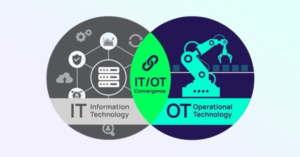As cost-of-living pressures continue to climb, people are looking for creative ways to save.
One method gaining popularity on social media is called “cash stuffing”. It’s a reinvention of the old envelope system our grandparents used to use, and it’s bringing back the use of physical cash.
In Australia, cash accounted for just 13 per cent of all payments made in 2022, according to the Reserve Bank of Australia.
So what is cash stuffing, and how does it work?
It essentially involves withdrawing your wage in cash on payday, and then dividing that money up to cover different expenses.
Most people use a binder with individual pockets or sleeves, with a label for each expense — for example, groceries, petrol, and eating out.
The money in each sleeve is what you have budgeted for until the next payday. The idea is you don’t spend over the amount you’ve allocated.
And the main objective is to spend less each payday, in order to put more money towards your savings.
A growing trend among young people
For Madison Lahiff, cash is still king.
The 26-year-old works full-time and started cash stuffing over a year ago. Before this, she used to pay for nearly everything on card.
“When you have a card, it is really, really easy to just go into the shops and buy whatever you want,” she told 7.30.
“When you have cash, you’re less likely to spend it … [and] because it is visual you’re able to see where you can cut down.”
Financial expert and CEO of WeMoney Daniel Jovevski said the rise in popularity of cash stuffing took him by surprise.
“Gen Z and millennials prefer frictionless transactions … most people don’t carry around a wallet anymore,” he said.
But he said the trend is an indication that people are seeking financial inspiration on how to budget better in the current economic climate.
“It’s a way for people to have the discipline of saving money,” he said.
“Young people today are happy to share insights into what they’re earning and how they’re saving.
“Seeing someone their age navigating [their finances] in real-time is far more relatable.”
Mr Jovevski says research also shows we feel physical pain when paying in cash.
“If we see a $100 note broken up in your wallet, we feel pain. With a card you don’t have that same feeling, as you don’t see the physical breaking up of the cash,” he said.
Ms Lahiff says she understands the hesitancy in returning to physical cash because people are stuck in their ways.
“A lot of people just … [think] card is simple, card is easy to pull out,” she said.
“It’s not as if [cash] is getting faded out.
“[Cash] is not difficult. It’s actually really simple … and if you want to save money, then you’ll find a way to do so.
“Having that physical product and that cash in my hand, that makes it a lot more easier to use, and for my mind to comprehend what I’m saving per week.”
Ms Lahiff points out that using a card can also incur a transaction fee we don’t always notice.
“Using your card, it’s a lot less likely for you to be aware of those small little fees that come out, or those sneaky direct debits,” she said.
Mr Jovevski adds the lack of transparency means consumers “probably don’t know the total fees they’re paying”.
He also raises the point that there are some risks involved in carrying around a lot of cash, such as theft, but he acknowledges that “everyone’s situation is unique”.
Common criticisms
One of the common criticisms of the cash stuffing method is not being able to pay utilities and rent with cash — but most cash stuffers like Ms Lahiff rely on direct debits for essential payments such as rent, Netflix and gym memberships.
“I always keep enough money in my bank account [for direct debits],” she said.
“I might leave $200 in there and that covers me for, say, my gym membership or my car insurance.
“So if you keep enough money in your account for your direct debits, then you just take the remaining out and you divide it up into the binder.”
Another issue often raised is that withdrawing your money in cash means you don’t earn interest on your savings.
However, most cash stuffers return their savings to the bank when it hits a certain amount. It not only lowers the risk factor of having large sums of money at home, but it also means you can still accrue interest on your savings.
“All my money goes back into my account at the end of the week,” Ms Lahiff said.
“It also comes back to the fact that you need money at the end of the day in order to earn interest on that money.
“If you have very little left at the end of the week, it’s not going to accumulate much interest.”
And with card usage being the main form of payment in Australia, what do you do if a place doesn’t accept cash?
“I’d still have my card on me most times,” Ms Lahiff said.
“I have not run into any difficulty with anywhere not accepting cash.
“If they don’t accept it, then I have my card as backup.”
Mr Jovevski doesn’t think the trend will last, arguing that consumers will always revert to the easiest payment method available.
“I think [cash stuffing] has a very niche appeal because at the end of the day, most consumers resort to having less friction.”
But for Ms Lahiff, she has no plans to go back to using her card full-time.
“I’ve completely found that this has helped me save more money than I ever have.”
Watch 7.30, Mondays to Thursdays 7.30pm on ABC iview and ABC TV
Contact 7.30
Do you know more about this story? Get in touch with 7.30 here.
This content was originally published here.




